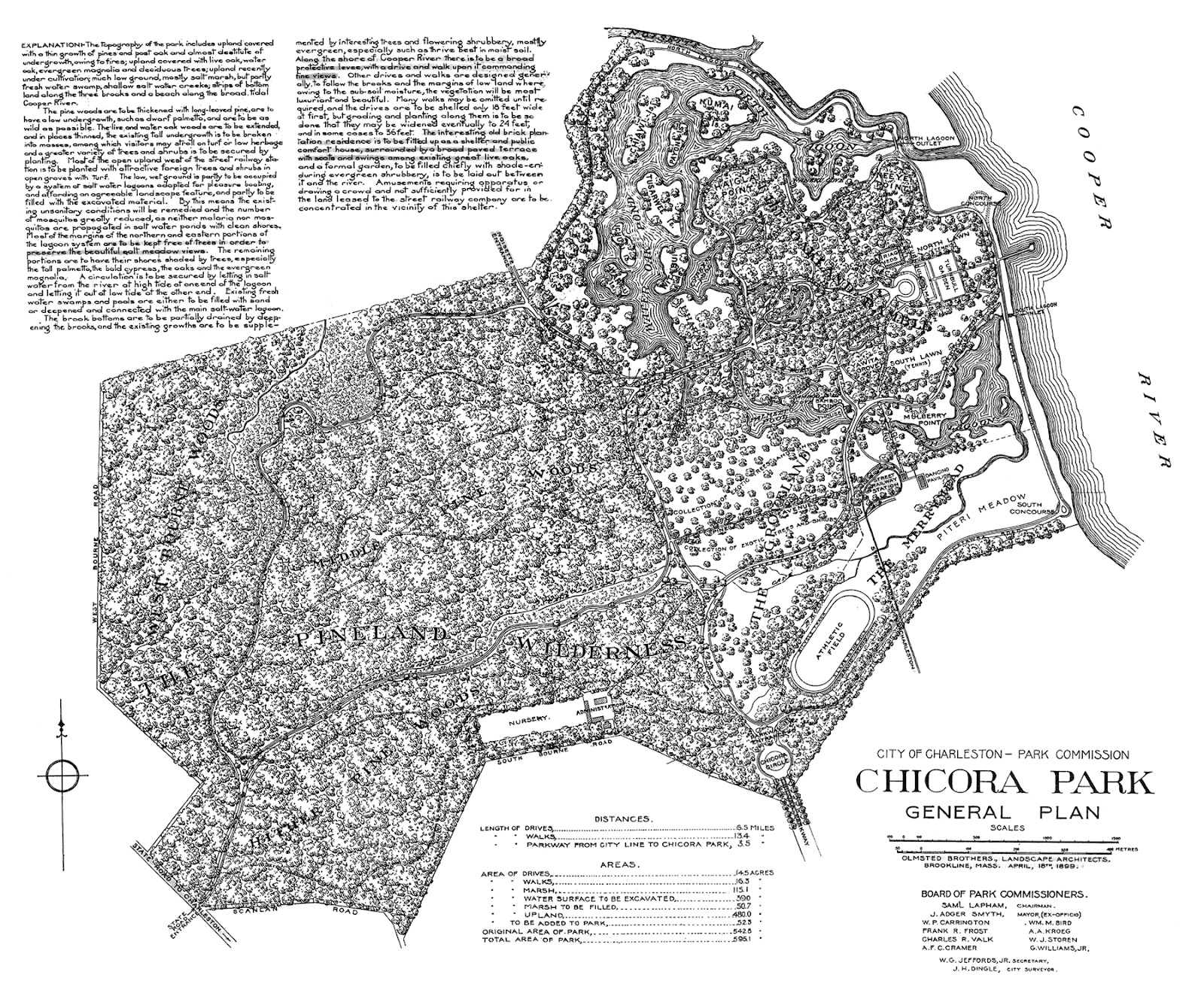What’s in a Name? Part 2 of 4
Chicora School of Communications
Written by volunteer journalist, Matt Tomsic of the South Carolina Ports Authority and researched in part by Preservation Society of Charleston South Carolina.
Chicora Elementary School was constructed by 1921 and expanded in 1955. Once called Chicora Graded School, the school is now known as Chicora School of Communications. As the first public school constructed in the “North Area,” it was named for the neighborhood in which it is located. The namesake was derived from the Chicora Native American tribe.
The Chicora Tribe The tribe lived near Pawley’s Island, and Native Americans used Chicora to refer to what would become South Carolina. Sparse evidence suggest the word “Chicora” is the Indian word for “Dogwood Town.” The Chicora were most likely one of the first Native Americans to see Spanish explorers in the 1520s, when they arrived. The new settlers enslaved 70 Chicora and took them back to Spain. One member of the tribe, who was renamed “Francisco de Chicora,” is thought to be the only survivor of the 70. Spaniards taught him their language, converted him to Christianity, and worked for Lucas Vasquez de Ayllón, a colonial official and explorer.

Lucas Vasquez de Ayllon, circa 1477
During this trip, Francisco Chicora amazed the Spanish Court with tales of his homeland, realizing his only opportunity to return home was through another expedition. He described his homeland as a “vast and fruitful land.” Some stories seemed far-fetched, like the story of an enormous Indian King named Datha who ruled giants and made them so by stretching the bones of infants and the story of men who grew tails and had to dig holes in the ground so they could sit. Francisco Chicora also told of the area’s plants and animals, which have been confirmed by scholars and researchers (The Chicora people’s main source of protein was oysters). In 1526, after the Spaniards struck land at the Santee River, Chicora escaped and returned to his people and wasn’t heard from again.
Chicora Park Chicora was used to refer to part of North Charleston beginning in 1896, when officials purchased about 600 acres of land and named it Chicora Park. A year later, the city built a pavilion and a rail line from downtown to Chicora Park, and later, a small zoo was added. Eventually, city officials bought more land to add a golf course to the park.
The Navy Yard Later in 1901, the U.S. Navy bought a portion of Chicora Park for a new naval base. President Theodore Roosevelt visited the area in 1902 stating Charleston would be an ideal place for a naval base. After the purchase, Chicora Park was consumed serving as the Navy Yard Officer’s Housing District and 24 buildings were constructed between 1903 and 1945 for naval officers and their families. Once the naval base closed in the 1990s, the city and private companies began working to redevelop Chicora Park and the former navy base land.
Some Chicora Indians still live on the coast of South Carolina, and their population was estimated at 620 people in 2012.
Chicora School of Communications is currently housed in the Ronald E. McNair Elementary School while their original building is rebuilt.
What’s in a Name?
Chicora School of Communications’ temporary home: Ronald E. McNair Elementary
In 1959, Ronald E. McNair walked a mile to the public library to check out books. He was 9 years old, and as he entered the library, everyone stared.
McNair, an African American, selected his books and approached the librarian, who told him he couldn’t be there because the library was for whites only.
McNair asked again to check out the books, and again she said no, adding that she would call the police if he didn’t leave.
McNair hopped up on the counter, sat there and said: “I’ll wait.”
The police arrived — as did McNair’s mother — to resolve the complaint, and they decided to let McNair take the books with him.
As a boy, McNair showed the courage he would need to become the second African American to go into space, his brother Carl says. McNair died during his second space flight in 1986 when the Challenger exploded after launching from the Kennedy Space Center.
He grew up in Lake City, graduating from high school in 1967. He went on to North Carolina A&T State University, where he studied physics, before getting a PhD in physics from the Massachusetts Institute of Technology.
McNair became the second African American to go into space in 1984, and during the flight, he was responsible for operating equipment to help launch a communications satellite. He spent 191 hours in space during that mission and played his saxophone while in orbit.
Sources:
- https://www.npr.org/2011/01/28/133275198/astronauts-brother-recalls-a-man-who-dreamed-big
- https://www.jsc.nasa.gov/Bios/htmlbios/mcnair.html
- https://www.sciway.net/hist/indians/chicora.html
- https://www.knowitall.org/periscope/display/showgalleryentry.cfm?entryID=93
- https://books.google.com/books?id=yFKJTymP4vsC&pg=PA97&lpg=PA97&dq=chicora+indians&source=bl&ots=4TLT7vUg05&sig=3hVb7gfLVB-QpysfvvR-PgtXNqY&hl=en&sa=X&ei=HeEZU_-wDNKtkAepw4CYAg&ved=0CCUQ6AEwADgU#v=onepage&q=chicora%20indians&f=false
- North Charleston Com Plan 2008
- Al’s Old Wall City Blog
-
https://nationalregister.sc.gov/SurveyReports/EqualizationSchoolsHistoricContext.pdf
- https://nationalregister.sc.gov/SurveyReports/EqualizationSchoolsCharleston.pdf
-
https://www.scequalizationschools.org/equalization-in-charleston.html
- https://www.ccsdschools.com/Schools/K12/documents/Chicorabrochure20100720.pdf
- https://books.google.com/books?
id=WjdhnfG0tYcC&pg=PA17&lpg= PA17&dq=francisco+chicora& source=bl&ots=ywplkbVZe4&sig= 0jiLdEaWcb8FhuuLtIFy79np774& hl=en&sa=X&ei= sGRVU5uAA8qusASgnYDwAw&ved= 0CFQQ6AEwCQ#v=onepage&q= francisco%20chicora&f=false








